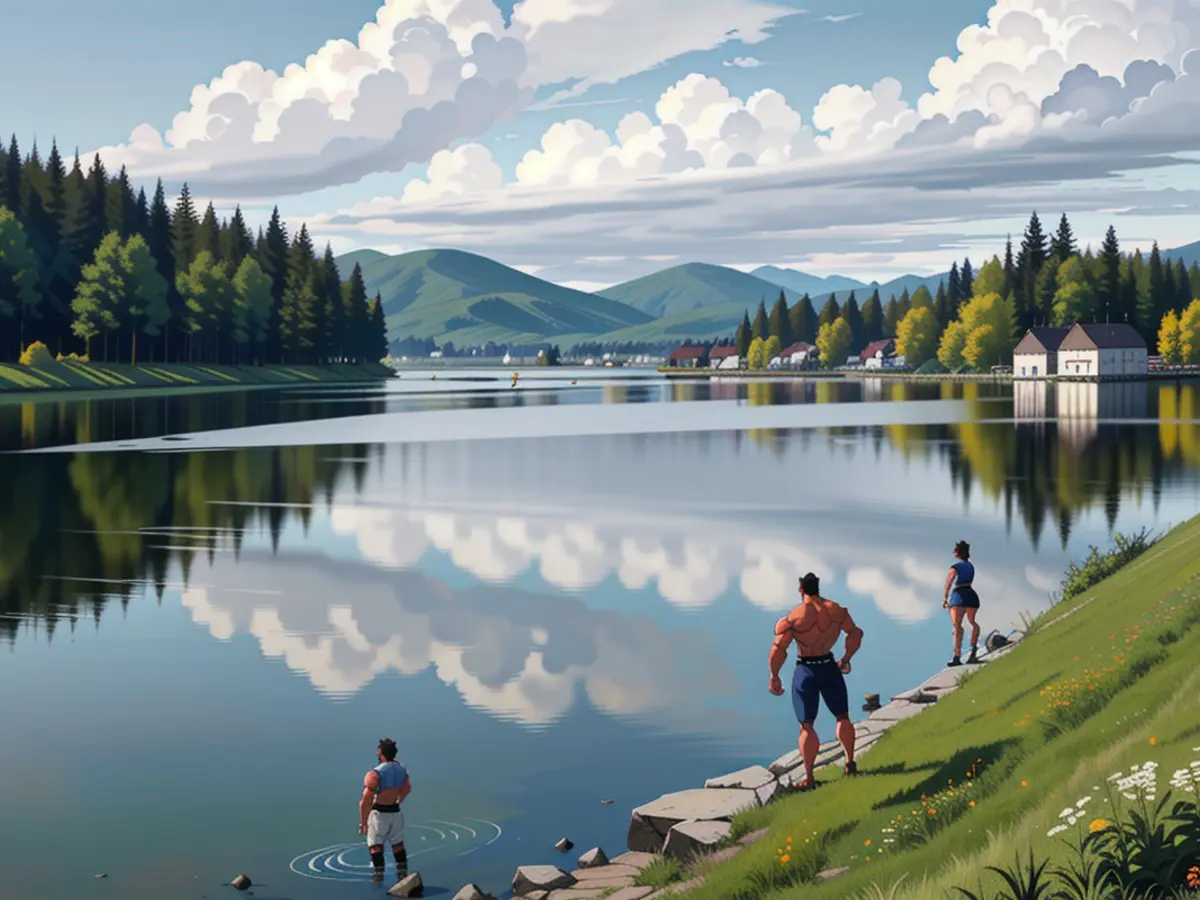Deteriorating climate conditions ostensibly impact the purity of water sources in reservoirs
Share on FB – Tweet – WhatsApp – Mail – Print – Link
In an alarming turn of events, climate change is wreaking havoc on the quality of drinking water from reservoirs. On World Water Day (March 22), Karsten Rinke from the Helmholtz Centre for Environmental Research in Magdeburg raised the alarm. The looming threat? Oxygen depletion and the release of harmful substances.
The German Scenario – Lakes Turning Grey
Approximately 15% of Germany's drinking water comes from reservoirs, a percentage that's higher in certain regions. As Rinke emphasized, "Germany without reservoirs would face a massive water crisis." Climate change presents a huge challenge to maintaining the pristine condition of these reservoirs.
Hotter Water, Decreasing Oxygen Levels
A warming trend of 2 degrees Celsius compared to the long-term average has already been observed in German reservoirs. If this trend persists, the temperature could increase by a further 4 to 5 degrees in the worst-case scenario—equivalent to moving a northern reservoir to a Mediterranean climate.
The repercussions are stark. Oxygen levels in the lakes are rapidly declining due to this warming. As Rinke cautions, "Eventually, the oxygen concentration in the water will approach zero, which results in the death of aquatic life forms like fish, mussels, snails, and crabs."
Toxic Manganese Contamination
A low oxygen content affects decomposition processes at the bottom of the lake. The ensuing release of toxic substances like manganese can render the water unfit for human consumption without additional processing.
New Solutions – New Challenges
One solution to counter the issue is to draw water from a deeper layer where oxygen levels are still reliable. However, this is technically challenging, as seen at the Mauthaus reservoir in Kronach, Bavaria.
The Future – New Dams or Expanding Existing Ones?
The possibility of building new dams in Germany, once unthinkable just 20 years ago, is now a viable option, according to Rinke. However, this comes with high costs and potential flooding of large areas, including protected zones. A more feasible plan is expanding existing dams, such as the Granet dam in the Harz region, where plans for elevating the dam wall are already underway.
- Climate Change
- Water Crisis
A Multifaceted Approach to Oxygen Levels and Water Quality
Protecting drinking water quality in the face of climate change requires a comprehensive strategy. Some potential solutions include:
Adaptive Water Management
- Dynamic Reservoir Operations: Modifying reservoir operations based on climate predictions helps maintain water quality.
- Enhanced Monitoring: Regular monitoring of variables like temperature, pH, and dissolved oxygen levels helps predict and mitigate changes.
Environmental Conservation Efforts
- Watershed Protection: Preserving natural vegetation around reservoirs filters out contaminants and reduces sedimentation, boosting oxygen levels.
- Fish Ladders and Sediment Bypass Systems: Restoring natural river flow patterns and mitigating impacts on aquatic life improves water quality.
Innovative Water Treatment
- Advanced Treatment Technologies: Implementing technologies like membrane filtration, advanced oxidation processes, and nature-based solutions enhances water quality.
- Aeration Systems: Artificial aeration increases oxygen levels in reservoirs where natural mixing is insufficient.
Reducing Organic Inputs
- Drought Management: Managing water levels during droughts prevents the concentration of organic materials that can form harmful byproducts during treatment.
- Agricultural Practices: Promoting sustainable agriculture to reduce nutrient runoff minimizes organic inputs into the reservoir.
Climate-Resilient Infrastructure
- Resilient Water Systems: Designing water systems to withstand climate-induced stresses like flooding and droughts is essential.
- Inclusive Planning: Engage local communities and stakeholders in planning to ensure water systems adapt to regional climate impacts.
Collaborative Governance
- Multi-stakeholder Dialogue: Encourage dialogue among states, communities, and resource managers to ensure sustainable use of water resources.
- Global Cooperation: Sharing knowledge and technologies worldwide helps tackle common challenges in reservoir management.
This comprehensive strategy aims to safeguard drinking water quality while addressing the broader environmental impacts of climate change on reservoirs.
- Schrepfermann, a researcher from the Helmholtz Centre for Environmental Research, emphasizes that Germany's water crisis could escalate significantly due to climate change's impact on reservoir water quality.
- To combat the declining oxygen levels and degrading water quality in German reservoirs, a multifaceted approach is needed, including adaptive water management, environmental conservation efforts, innovative water treatment, reducing organic inputs, constructing climate-resilient infrastructure, and fostering collaborative governance.
- In the coming years, unthinkable measures such as building new dams may become necessary to secure water supply, but this could lead to environmental degradation and high costs. Alternatively, expanding existing dams like the Granet dam in the Harz region might be a more feasible solution, but it requires careful planning and consideration.








